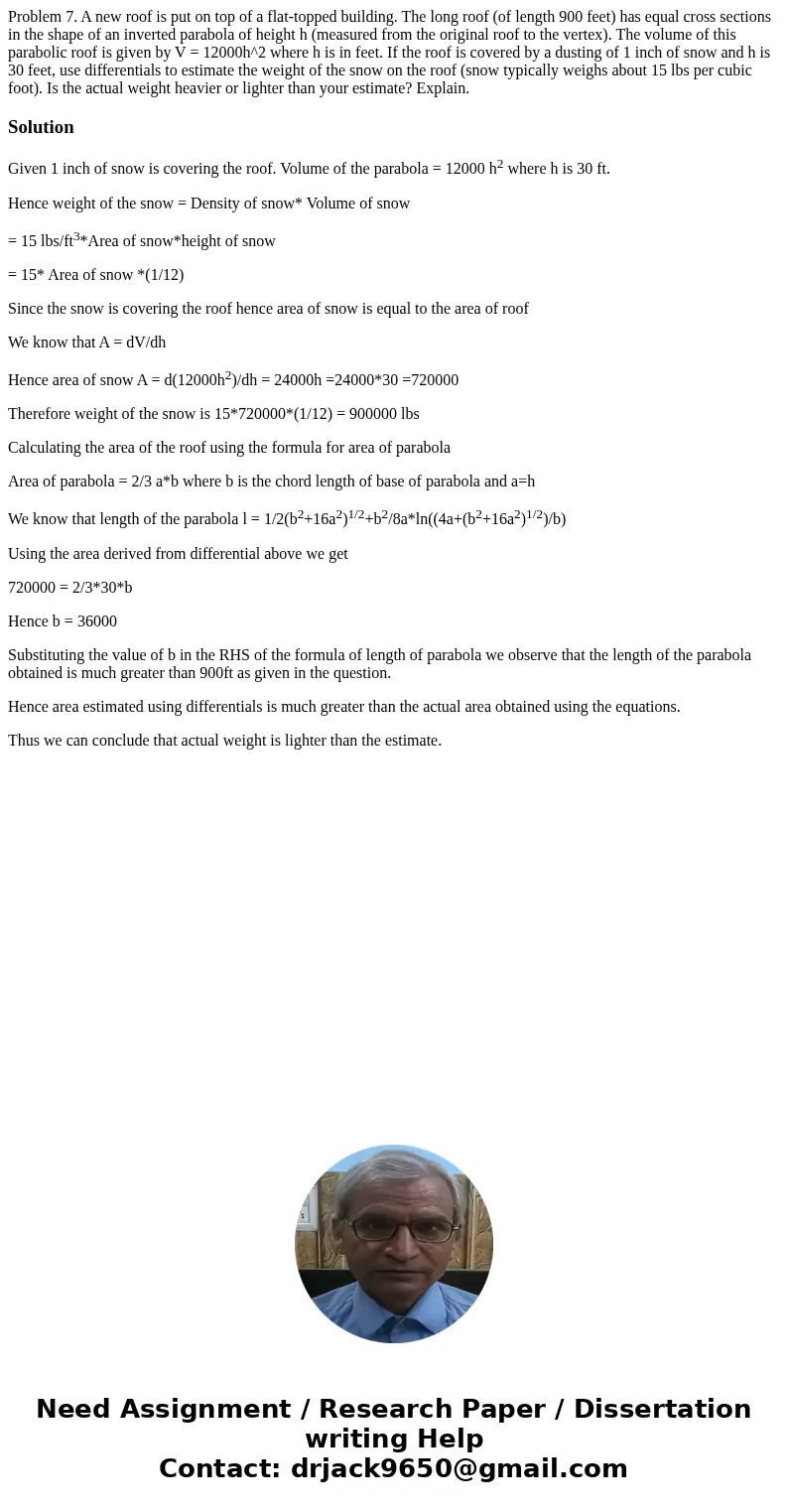Problem 7 A new roof is put on top of a flattopped building
Problem 7. A new roof is put on top of a flat-topped building. The long roof (of length 900 feet) has equal cross sections in the shape of an inverted parabola of height h (measured from the original roof to the vertex). The volume of this parabolic roof is given by V = 12000h^2 where h is in feet. If the roof is covered by a dusting of 1 inch of snow and h is 30 feet, use differentials to estimate the weight of the snow on the roof (snow typically weighs about 15 lbs per cubic foot). Is the actual weight heavier or lighter than your estimate? Explain.
Solution
Given 1 inch of snow is covering the roof. Volume of the parabola = 12000 h2 where h is 30 ft.
Hence weight of the snow = Density of snow* Volume of snow
= 15 lbs/ft3*Area of snow*height of snow
= 15* Area of snow *(1/12)
Since the snow is covering the roof hence area of snow is equal to the area of roof
We know that A = dV/dh
Hence area of snow A = d(12000h2)/dh = 24000h =24000*30 =720000
Therefore weight of the snow is 15*720000*(1/12) = 900000 lbs
Calculating the area of the roof using the formula for area of parabola
Area of parabola = 2/3 a*b where b is the chord length of base of parabola and a=h
We know that length of the parabola l = 1/2(b2+16a2)1/2+b2/8a*ln((4a+(b2+16a2)1/2)/b)
Using the area derived from differential above we get
720000 = 2/3*30*b
Hence b = 36000
Substituting the value of b in the RHS of the formula of length of parabola we observe that the length of the parabola obtained is much greater than 900ft as given in the question.
Hence area estimated using differentials is much greater than the actual area obtained using the equations.
Thus we can conclude that actual weight is lighter than the estimate.

 Homework Sourse
Homework Sourse